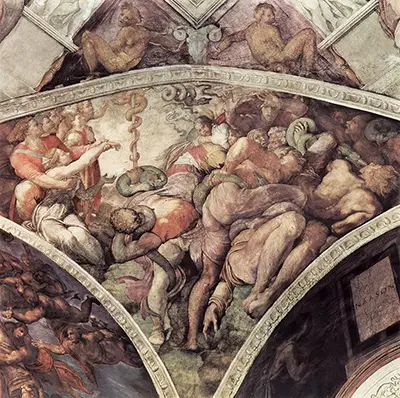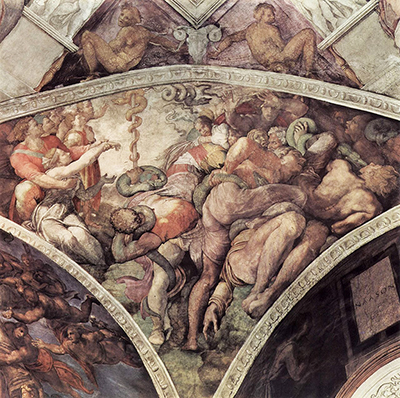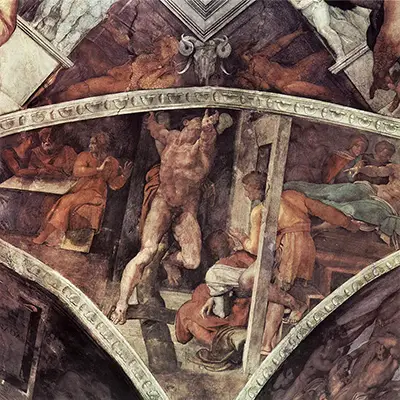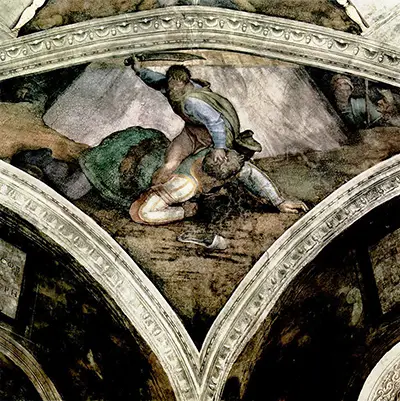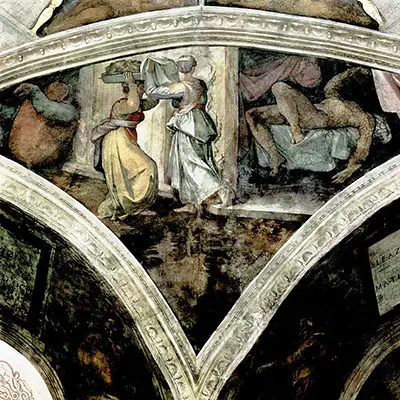Michelangelo chose to complete four biblical scenes for this challenge, and carefully designed them to be curved around the structure. They would also need to be triangular in shape in order to fit between the different structural parts of the building. This great master was not only a painter, but also a sculptor and architect to such a high level that he could understand all elements of this project and so was ideally placed to plan and oversee the work of his assistants. Their role would become essential once the true ambitions of the project were understood - it would simply have been impossible for Michelangelo to plan and implement everything by himself, even given the remarkable achievements across his lifetime. Of the four stories covered in this series, David and Goliath and Judith and Holofernes were both highly common within the Italian Renaissance and therefore are both familiar with most of us already.
The artist delivered a fairly simple depiction of David and Goliath, whilst his versions of The Brazen Serpent and Crucifixion of Haman were far busier. Some have claimed that this series was amongst the more Mannerist in style of his work within the Sistine Chapel's earlier stages. There is therefore plenty of emotion to witness within these particular artworks, giving something of a connection with his famous Last Judgement mural that sits close by. For visitors to witness all of this content together in a single room is both inspiring but also somewhat overwhelming, particularly for those who understand and appreciate the religious context behind each of these pieces. Over the centuries the paintings have needed frequent attempts to preserve the original appearance of each painting, as otherwise they become darkened and even up close the details would become very hard to decipher. Such a location as this will always be able to attract some of the finest preservers in the world, and so there is no shortage of people willing to help keep the Chapel's interior in the best condition possible.
The precise term of pendentive refers to where a dome shape is placed over flat spaces. They thus become triangular in shape and are able to allow the two opposing shapes co-exist. Michelangelo was entirely comfortable with architectural principles such as this and so would have been able to quickly arrange a solution for those corner elements within this overall structure. Rather than treat these pendentives as an afterthought, or nuisance, he devoted time to establishing more impressive art here which allows the standard to the ceiling design to remain consistent. They may not be easy to appreciate in person, because of the awkward angles and the very nature of visiting such a popular tourist destination, but some high quality photography taken here has allowed us to understand more about the precise details of each artwork placed in the different corners of the room.
